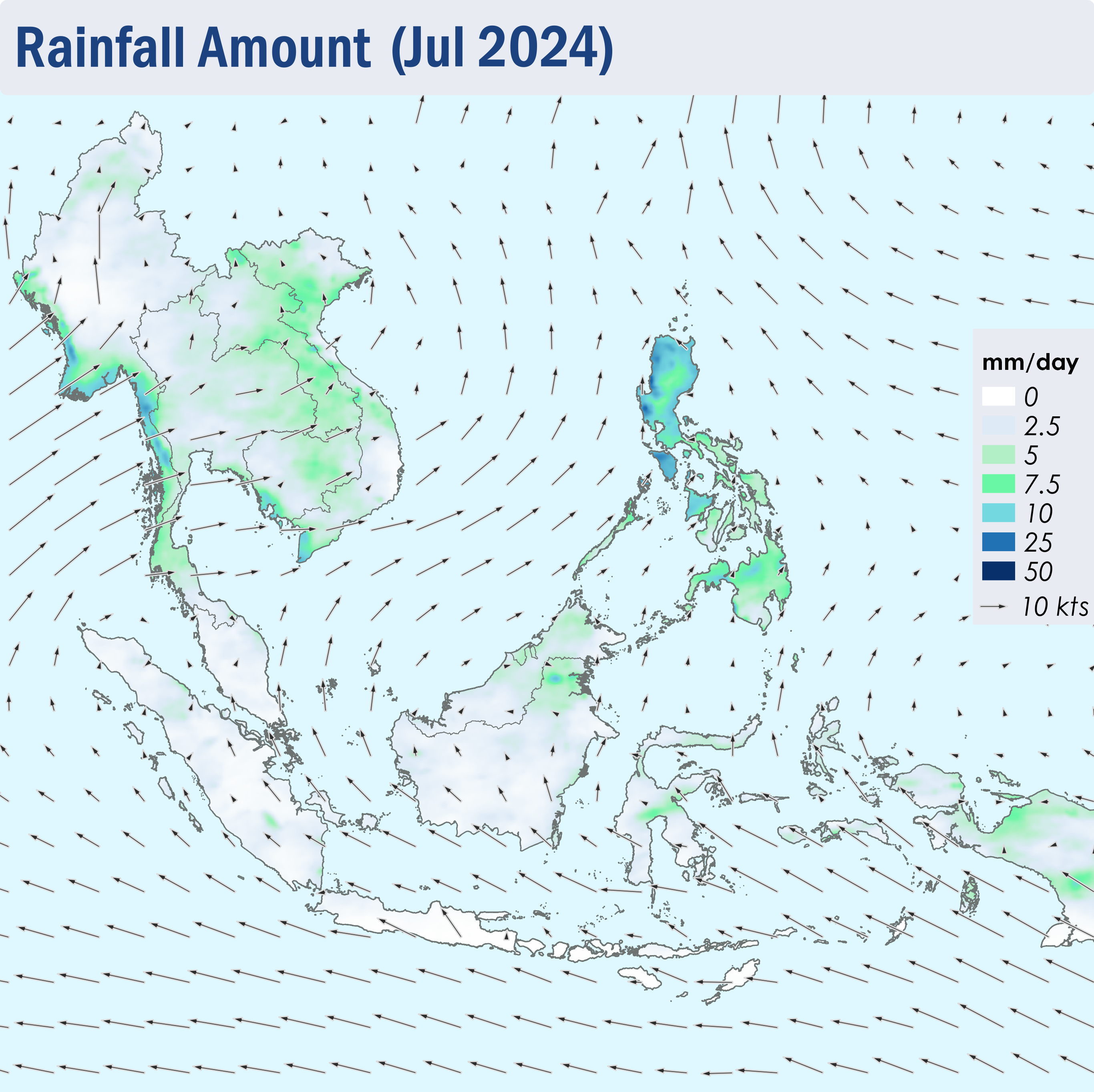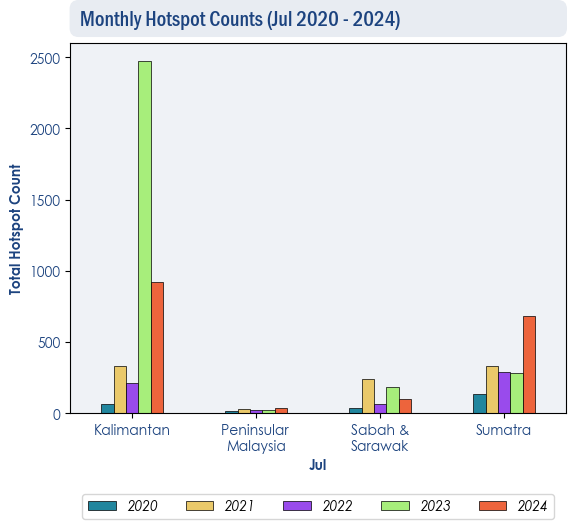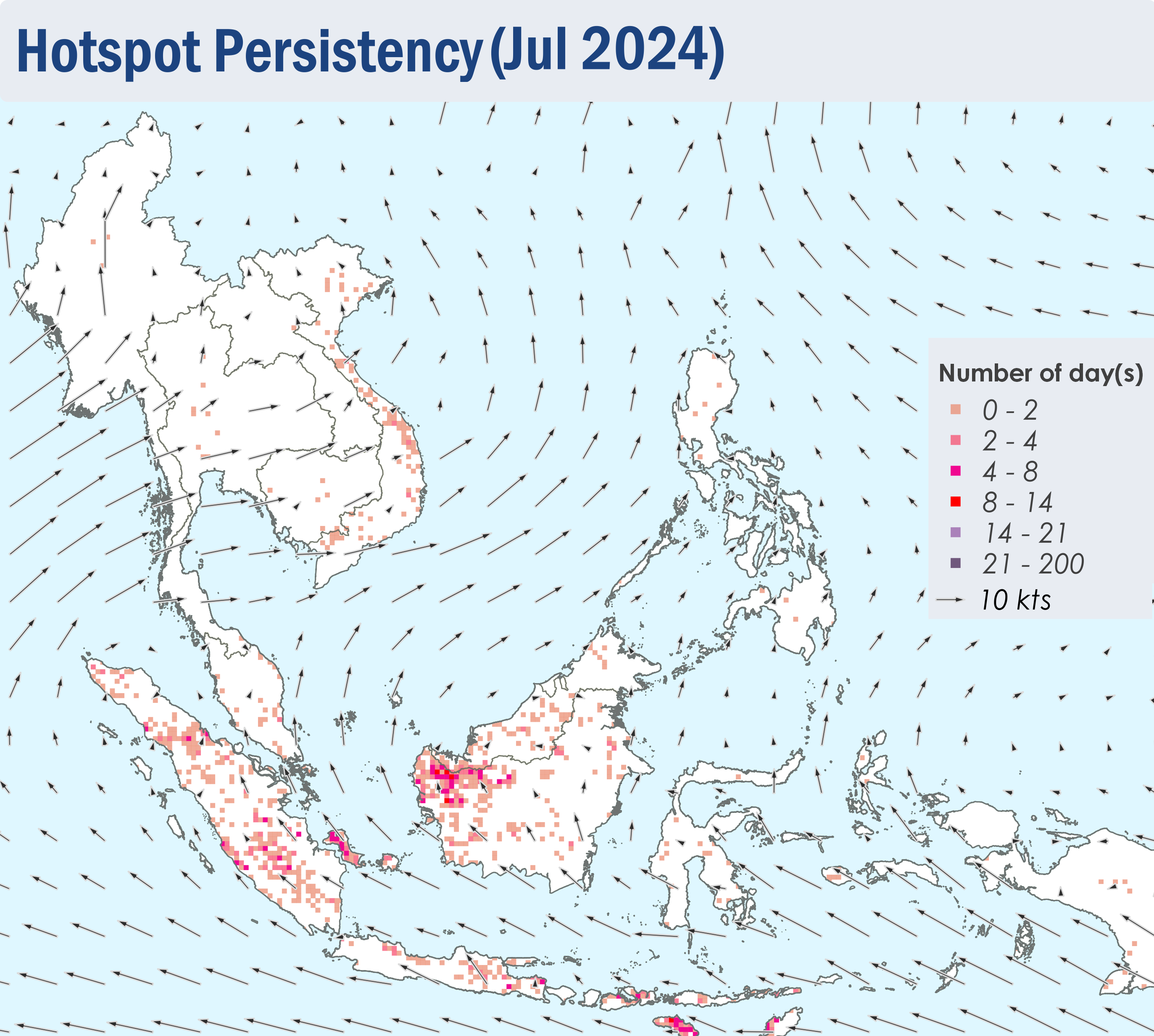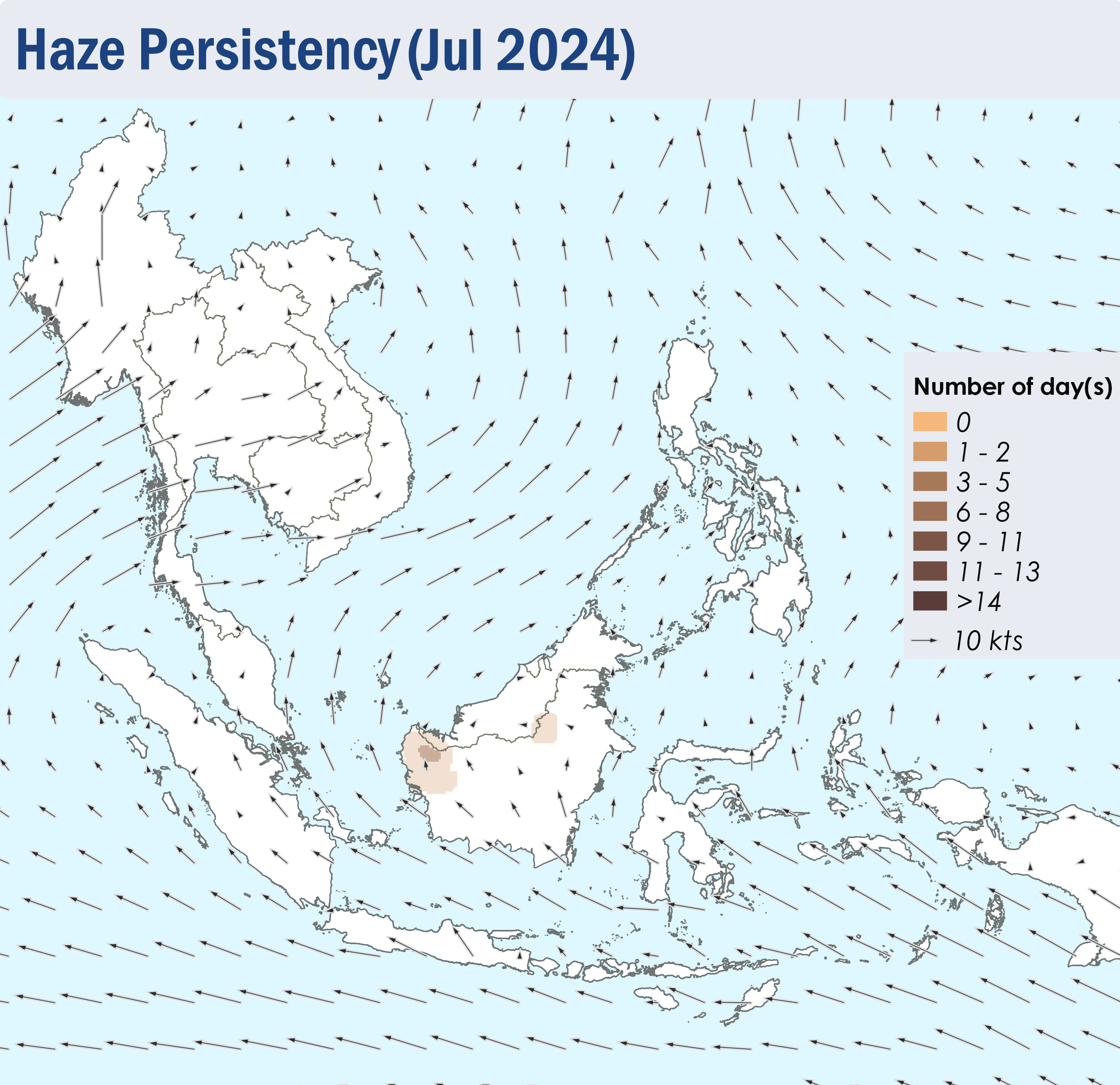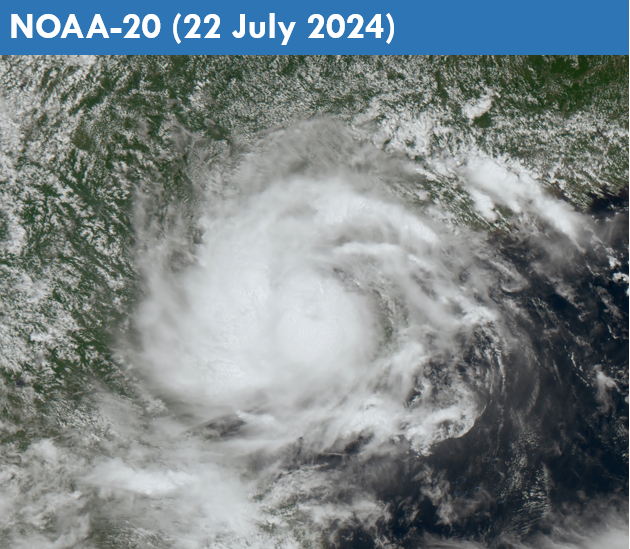Review of Regional Haze Situation for July 2024
1.1 In July 2024, the Southwest Monsoon conditions continued over the ASEAN region. Over the northern ASEAN region, the prevailing winds blew mostly from the southwest to west. In the southern ASEAN region, the prevailing winds over areas near the Equatorial region were observed to be generally weak and variable in direction while southeasterly winds were observed over the rest of the region (Figure 1).
1.2 Showers were observed over most of the ASEAN region during the review period, apart from Java and the Lesser Sunda Islands where dry conditions were observed (Figure 1). Parts of Peninsular Malaysia, Sumatra, and Kalimantan also experienced drier conditions during the latter half of the review period. On 17 July 2024, the Alert Level 1 for the southern ASEAN region was activated, signalling the start of the traditional dry season for the region. Over the northern ASEAN region, heavy rainfall was recorded over the northern parts of the Philippines due to the influence of Tropical Storm Prapiroon and Typhoon Gaemi situated over the northern parts of the South China Sea and the northwest Pacific Ocean respectively during the latter half of July (Figure 9 and 10). Rainfall was also observed to be high over the western coastal areas of Myanmar (Figure 1).
1.3 Over the southern ASEAN region, the hotspot counts were generally lower or comparable to previous years, except for the hotspot counts in Sumatra which was the highest compared to the past 5 years (Figure 2). Nonetheless, the hotspot activity for the southern ASEAN region remained relatively low compared to other parts of the year. Over the northern ASEAN region, the hotspot counts were lower or comparable to the past few years (Figure 3).
1.4 Hotspot activities were intense and persistent especially in the western parts of Kalimantan and parts of Sumatra towards the end of July 2024 (Figure 4). Slight to moderate localised smoke plumes were observed to emanate from hotspots detected in the western and central parts of Kalimantan and parts of Sumatra (Figure 5, 6, 7 and 8).


